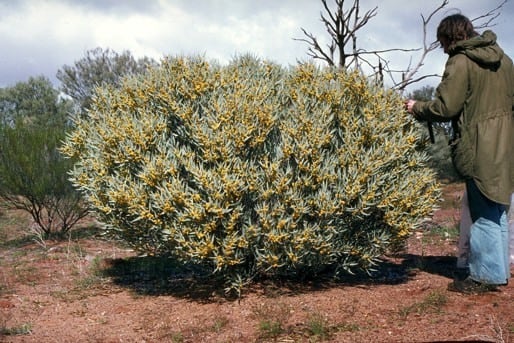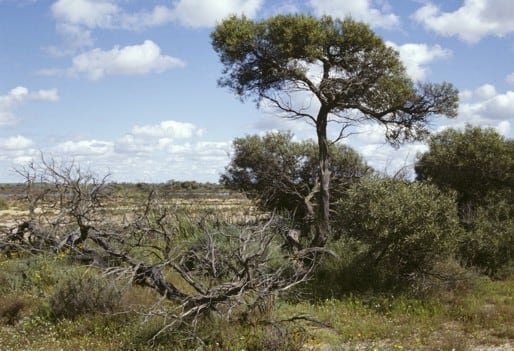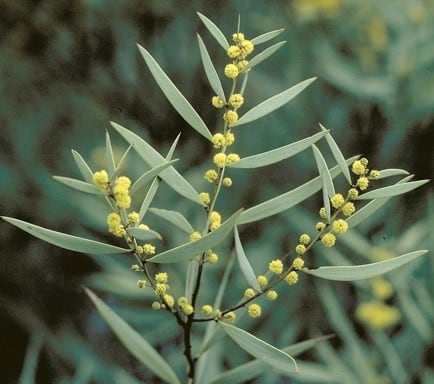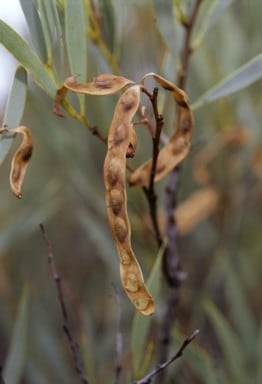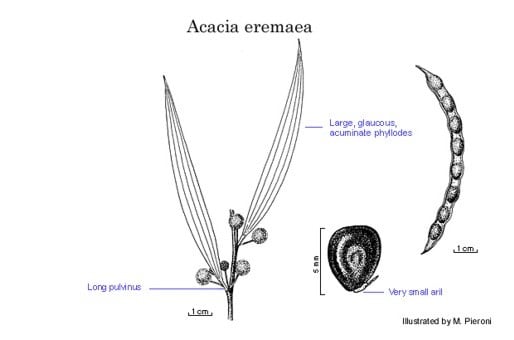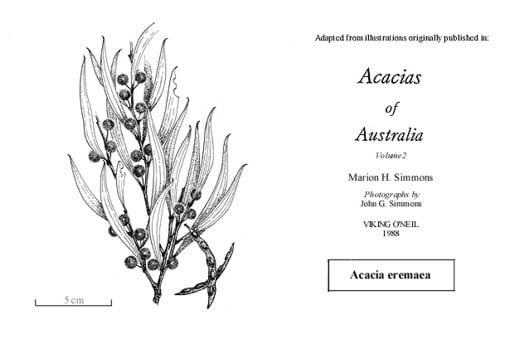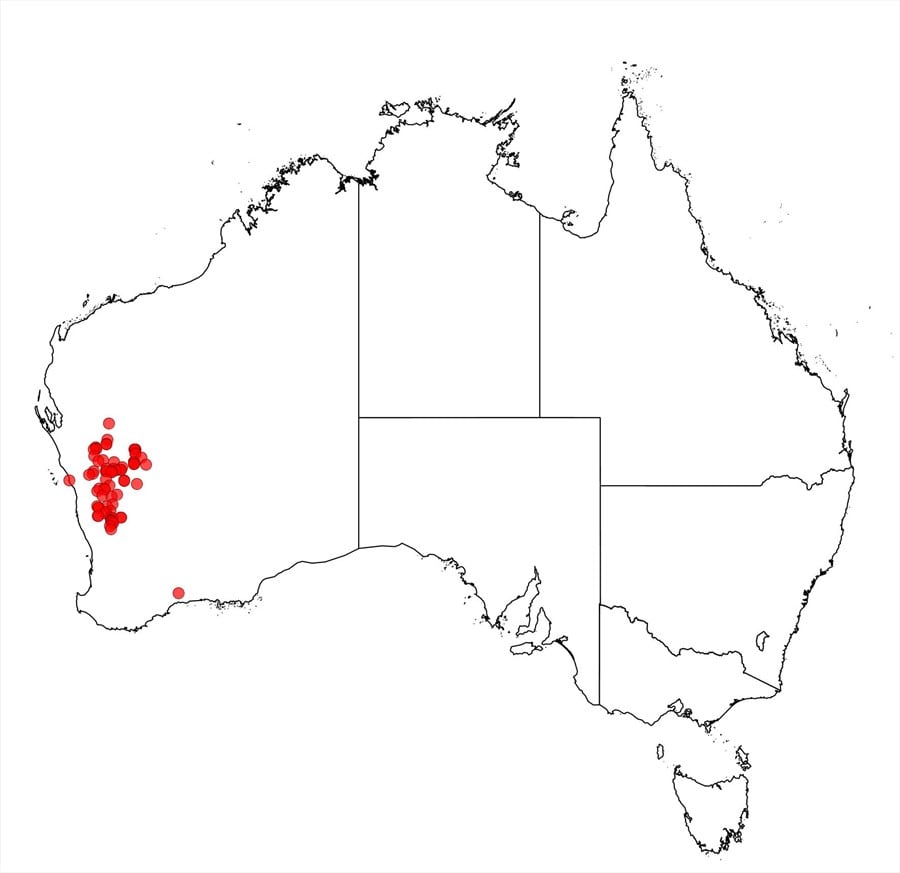Acacia eremaea C.R.P.Andrews
WATTLE
Acacias of Australia
Family
Fabaceae
Distribution
Occurs from Boolardy and Cue S towards Wongan Hills, W.A.
Description
Dense shrub or tree to 4 m high. Branchlets terete, ±ribbed, ±appressed-puberulous. Phyllodes erect, narrowly elliptic to elliptic-lanceolate, straight to slightly incurved, 6–12 cm long, 6–17 mm wide, acuminate, ±pungent, rigid, ±glaucous, glabrous, with numerous closely parallel immersed nerves of which ±3 are typically slightly raised. Inflorescences simple, 2–4 per axil; peduncles 5–17 mm long, ±appressed-puberulous; heads globular, 5.5–7.5 mm diam., 54–85-flowered, golden. Flowers 4-merous; sepals free. Pods linear, strongly raised over seeds, straight to slightly curved, to 9 cm long, 5–7 mm wide, chartaceous, glabrous. Seeds longitudinal, ovate, 5–6 mm long, glossy, brown; funicle ribbon-like; aril not prominent.
Habitat
Grows on clay loam flats and sand, often near salt lakes, in tall Acacia shrubland and low woodland.
Specimens
W.A.: Twin Peaks, A.M.Ashby 3293 (NSW, PERTH); 8.2 km SSE of Yalgoo, R.Coveny 7932 & B.R.Maslin (AD, BRI, CANB, K, L, NSW, PERTH, US); Watheroo rabbit fence, M.Koch 1664 (PERTH).
Notes
Phyllodes similar to A. xiphophylla which is readily distinguished by its spicate inflorescences, united calyx and seed characters. Superficially similar to A. galeata.
FOA Reference
Data derived from Flora of Australia Volumes 11A (2001), 11B (2001) and 12 (1998), products of ABRS, ©Commonwealth of Australia
Author
R.S.Cowan
This identification key and fact sheets are available as a mobile application:
URL: https://apps.lucidcentral.org/wattle/
© Copyright 2018. All rights reserved.
